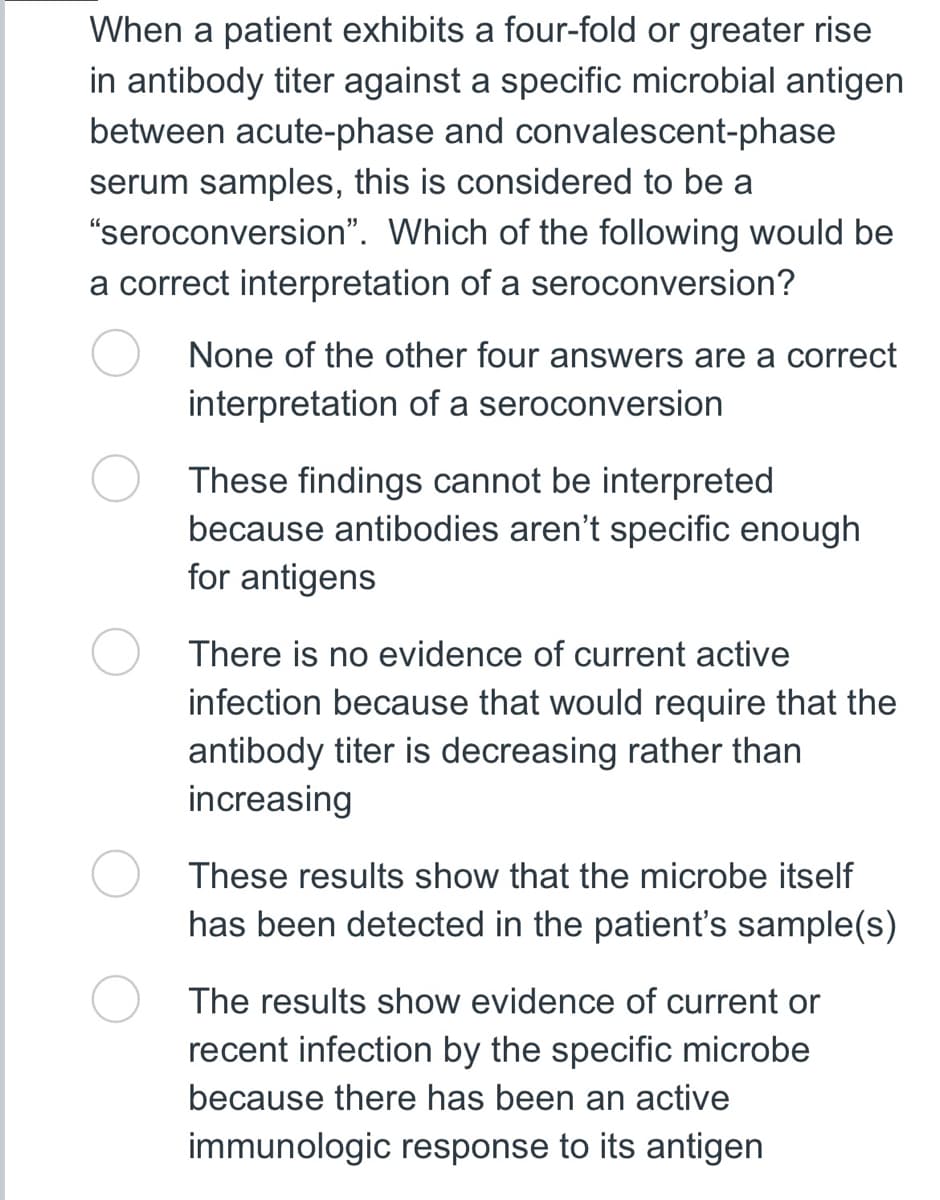Some bacteria produce the enzyme penicillinase, which breaks the beta-lactam ring in the penicillin molecule and converts it into penicilloic acid, which is harmless to bacteria. This is an example of which of the following mechanisms of antibiotic resistance? Destruction or inactivation of the antibiotic by the microbe Preventing penetration to the target site within the microbe Alteration of the drug's target site(s) within the microbe None of the other four answers are correct Rapid ejection (pumping) of the drug out of the microbial cell
Some bacteria produce the enzyme penicillinase, which breaks the beta-lactam ring in the penicillin molecule and converts it into penicilloic acid, which is harmless to bacteria. This is an example of which of the following mechanisms of antibiotic resistance? Destruction or inactivation of the antibiotic by the microbe Preventing penetration to the target site within the microbe Alteration of the drug's target site(s) within the microbe None of the other four answers are correct Rapid ejection (pumping) of the drug out of the microbial cell
Microbiology for Surgical Technologists (MindTap Course List)
2nd Edition
ISBN:9781111306663
Author:Margaret Rodriguez, Paul Price
Publisher:Margaret Rodriguez, Paul Price
Chapter6: Microbial Viability And Growth
Section: Chapter Questions
Problem 3UTM: Dr. Martinez ordered a Foley catheter for his patient who was on corticosteroids after kidney...
Related questions
Question

Transcribed Image Text:Some bacteria produce the enzyme penicillinase,
which breaks the beta-lactam ring in the penicillin
molecule and converts it into penicilloic acid, which
is harmless to bacteria. This is an example of
which of the following mechanisms of antibiotic
resistance?
Destruction or inactivation of the antibiotic by
the microbe
Preventing penetration to the target site
within the microbe
Alteration of the drug's target site(s) within
the microbe
None of the other four answers are correct
Rapid ejection (pumping) of the drug out of
the microbial cell

Transcribed Image Text:When a patient exhibits a four-fold or greater rise
in antibody titer against a specific microbial antigen
between acute-phase and convalescent-phase
serum samples, this is considered to be a
"seroconversion".
Which of the following would be
a correct interpretation of a seroconversion?
None of the other four answers are a correct
interpretation of a seroconversion
These findings cannot be interpreted
because antibodies aren't specific enough
for antigens
There is no evidence of current active
infection because that would require that the
antibody titer is decreasing rather than
increasing
These results show that the microbe itself
has been detected in the patient's sample(s)
The results show evidence of current or
recent infection by the specific microbe
because there has been an active
immunologic response to its antigen
Expert Solution
This question has been solved!
Explore an expertly crafted, step-by-step solution for a thorough understanding of key concepts.
This is a popular solution!
Trending now
This is a popular solution!
Step by step
Solved in 3 steps

Recommended textbooks for you

Microbiology for Surgical Technologists (MindTap …
Biology
ISBN:
9781111306663
Author:
Margaret Rodriguez, Paul Price
Publisher:
Cengage Learning


Microbiology for Surgical Technologists (MindTap …
Biology
ISBN:
9781111306663
Author:
Margaret Rodriguez, Paul Price
Publisher:
Cengage Learning
